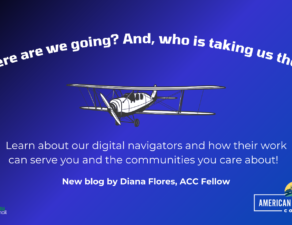Equity Tech for a Better Future
By Ana Hand
In the past couple of decades, we have seen computers evolve and integrate into our daily lives and businesses in ways that we never could have imagined. As a society, we had the opportunity to build racial equity into the foundations of our technological programs and technology based businesses but have failed to do so. Technology is the most accessible to the white and wealthy and is actively harmful to marginalized people in many ways. Mortgage lending systems based on artificial intelligence have been known to charge black and hispanic borrowers higher rates for the same loans as white individuals and the criminal justice system uses technology such as predictive policing, facial recognition, and risk-scoring that have clear racial bias integrated in their systems (Swanner, 2021). Despite most tech-centered programs reporting that diversity is important to company success, many people of color say that they feel unwelcome in the workplace. Many people of color report that diversity is seen in the corporate world as necessary for branding purposes but that the reality of their experiences in the workplace involve feeling underpaid and facing racism and microaggressions (Swanner, 2021).
How do we fix this lack of racial equity when it runs so deeply throughout the technological world? Racial equity cannot be achieved in one night but the lack of its existence is a deficiency that cannot go unchanged. Racial bias and inequality did appear in programs and businesses without being integrated directly or indirectly. The prejudiced foundations of systems of business and technology need to be rebuilt to progress forward with ethical technological innovation and production.
In an interview by the Esri & The Science of Where Podcast, Darlene Flynn, community activist and Director of the Department of Race and Equity in Oakland, California, explains some ways in which we can contribute to said reconstruction. Ms. Flynn stresses the importance of listening to marginalized people. She says to collect data within a business regarding the areas of concern expressed by people of color rather than the areas one might independently assume are important (Gadsden 2021). Ms. Flynn also stresses the importance of using racial equity as a tool. A person cannot change another person for them. One can only achieve internal change for themself. This applies to the individual level of racial equity as well as to larger and more complex groups of thought and function. Beginning with internal education in a business and teaching racial equity on a small scale builds important foundations for bigger change. Ms. Flynn explains in her interview that politics are powerful in change but sustainability is harder. Leaders pass but infrastructure stays. Deeply integrating positive practices, thoughts and behaviors regarding equality are essential to the future of racial equity (Gadsden 2021).
When asked about the push-back she has received in her political ventures Ms. Flynn explains that opposition to her and her colleagues’ agenda reminded her of the initial panic that took place when environmental analysis began its integration into businesses and large scale production. She explains that panic regarding time, cost, and general efficiency were at large. However, now environmental analysis is a natural element of business planning. People fear change and the unknown. Ms. Flynn says that environmental impact analysis was not the end of the world and the integration of racial equity will not be the end of the world either (Gadsden 2021).
Racial inequality in the foundation of our technology and businesses is a known phenomenon. To successfully and ethnically move forward in this industry, changes are necessary. It is important that if one’s capability to cause change in racial equity is small, one chooses that small change over no change. These small movements are what will build a new foundation of racial equity in the technological world. Eventually, racial equity will become inherent and will no longer feel like a burden on efficiency in the way that some individuals may feel it is.
This blog post may contain views and opinions which are those of the authors and do not necessarily reflect the official policy or position of any other author, agency, organization, employer or company, including Carroll Technology & Innovation Council.
Comments published by users are their sole responsibility and the users will take full responsibility, liability and blame for any libel or litigation that results from something written in or as a direct result of something written in a comment. Carroll Technology & Innovation Council is not liable for any comment published by users and reserves the right to delete any comment for any reason.






